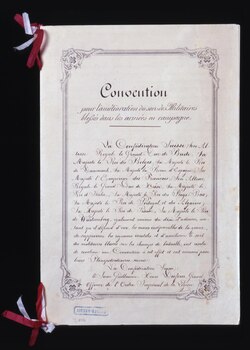
Geneva Conventions
International treaties of war / From Wikipedia, the free encyclopedia
Dear Wikiwand AI, let's keep it short by simply answering these key questions:
Can you list the top facts and stats about Geneva Conventions?
Summarize this article for a 10 years old
The Geneva Conventions are four treaties, and three additional protocols, that establish international legal standards for humanitarian treatment in war. The singular term Geneva Convention usually denotes the agreements of 1949, negotiated in the aftermath of the Second World War (1939–1945), which updated the terms of the two 1929 treaties and added two new conventions. The Geneva Conventions extensively define the basic rights of wartime prisoners, civilians and military personnel, established protections for the wounded and sick, and provided protections for the civilians in and around a war-zone.[2]


The Geneva Conventions defines the rights and protections afforded to non-combatants who fulfills the criteria of being protected persons.[3] The treaties of 1949 were ratified, in their entirety or with reservations, by 196 countries.[2] The Geneva Conventions concern only protected non-combatants in war. The use of wartime conventional weapons are addressed by the Hague Conventions of 1899 and 1907 and the 1980 Convention on Certain Conventional Weapons, while the biological and chemical warfare in international armed conflicts are addressed by the 1925 Geneva Protocol.